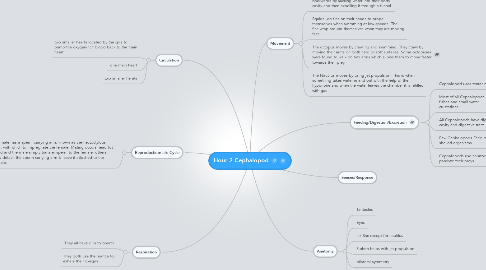Hour 2 Cephalopod
by Karla Lockman

1. Reproduction/Life Cycle
1.1. the male has a sperm carrying arm, known as the hectoctylous arm, with which to impregnate the female. Mating occurs head tot head and the male simply transfer sperm to the female. others may detach the sperm carrying arm & leave it attached to the female.
2. Respiration
2.1. They all have gills to breath
2.2. They both use the mantle to exhale their oxegyn
3. Circulation
3.1. two smaller hearts located by the gills to pump the oxygen-rich blood back to the main heart
3.2. one main heart
3.3. two smaller herats
4. Movement
4.1. The cuttlefish can jet propel themselves backwards by sucking water into their body cavity and then expelling it through a funnel.
4.2. Squids use fins on their heads to propel themselves when swimming at low speeds. The fins wrap around themselves when they are moving fast.
4.3. The octopus moves by crawling and swimming. They crawl by moving their arms on both hard or soft surfaces. Some octopuses were found to walk on two arms which allows them to move faster towards their prey.
4.4. The Nautilus moves by using jet propulsion. This is when something takes water in and out with the help of the hyponone and when the water leaves the chamber it is refilled with gas.
5. Senses/Response
6. Feeding/Digestion/Excretion
6.1. Cephalopod uses tentacles to help them feed.
6.2. Most of all Cephalopods feed on fishes and small water crustations.
6.3. All Cephalopods have digestive cavity and digestive tract.
6.4. Few Cephalopods Feed on hard shelled organisms
6.5. Cephalopods use neurtoxins to paralyze their preys.
7. Anatomy
7.1. Tentacles
7.2. Eyes
7.3. Ink Sac-except for nautilus
7.4. Siphon-helps with jet propulsion
7.5. bilateral symmetry
7.6. foot (tentacles) attached to head (head-footed)
7.7. largest brain of all invertaibrates


